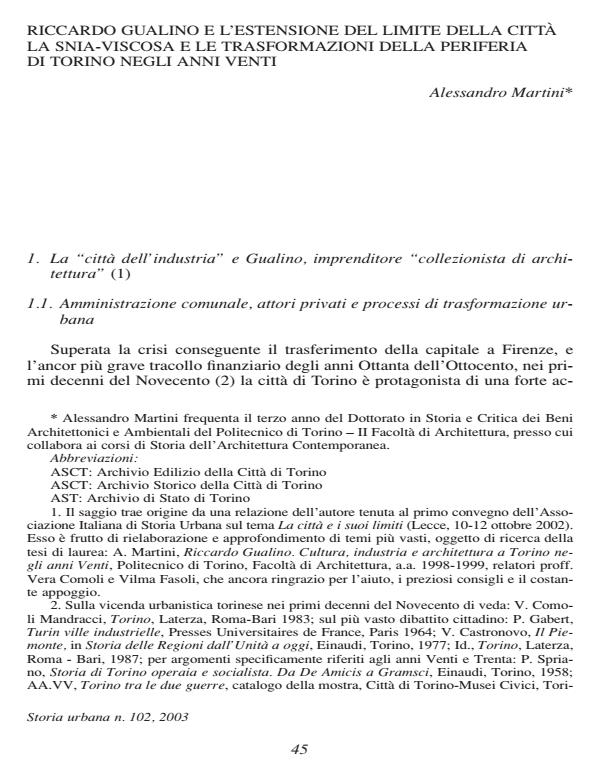Riccardo Gualino e l'estensione del limite della città. La Snia-Viscosa e le trasformazioni della periferia di Torino negli anni Venti
Titolo Rivista STORIA URBANA
Autori/Curatori Alessandro Martini
Anno di pubblicazione 1994 Fascicolo 2003/102 Lingua Italiano
Numero pagine 24 P. Dimensione file 238 KB
DOI
Il DOI è il codice a barre della proprietà intellettuale: per saperne di più
clicca qui
Qui sotto puoi vedere in anteprima la prima pagina di questo articolo.
Se questo articolo ti interessa, lo puoi acquistare (e scaricare in formato pdf) seguendo le facili indicazioni per acquistare il download credit. Acquista Download Credits per scaricare questo Articolo in formato PDF

FrancoAngeli è membro della Publishers International Linking Association, Inc (PILA)associazione indipendente e non profit per facilitare (attraverso i servizi tecnologici implementati da CrossRef.org) l’accesso degli studiosi ai contenuti digitali nelle pubblicazioni professionali e scientifiche
In the period of Turin’ major urban development between the two World Wars a period in which Turin is considered both a laboratory city and a leading industrial city the financier and industrialist Riccardo Gualino, also a renowned art-collector and patron of the arts, plays a major role as the promoter of modern architecture (ranging from urban buildings to stalls, from the offices by Pagano and Levi Montalcini to the Villa-museum built at the end of the 1920’s). Of particular importance, the industrial and residential complex Snia-Viscosa was created by Gualino in 1925. It is a large building area, including the industrial plant and the workers’ quarters, which required an enormous effort both in terms of financial resources, design and planning. Both public and private sectors were involved in the project, which is part of the new infrastructure system to be built in the northern part of Turin towards Milan area.;
Alessandro Martini, Riccardo Gualino e l'estensione del limite della città. La Snia-Viscosa e le trasformazioni della periferia di Torino negli anni Venti in "STORIA URBANA " 102/2003, pp , DOI: